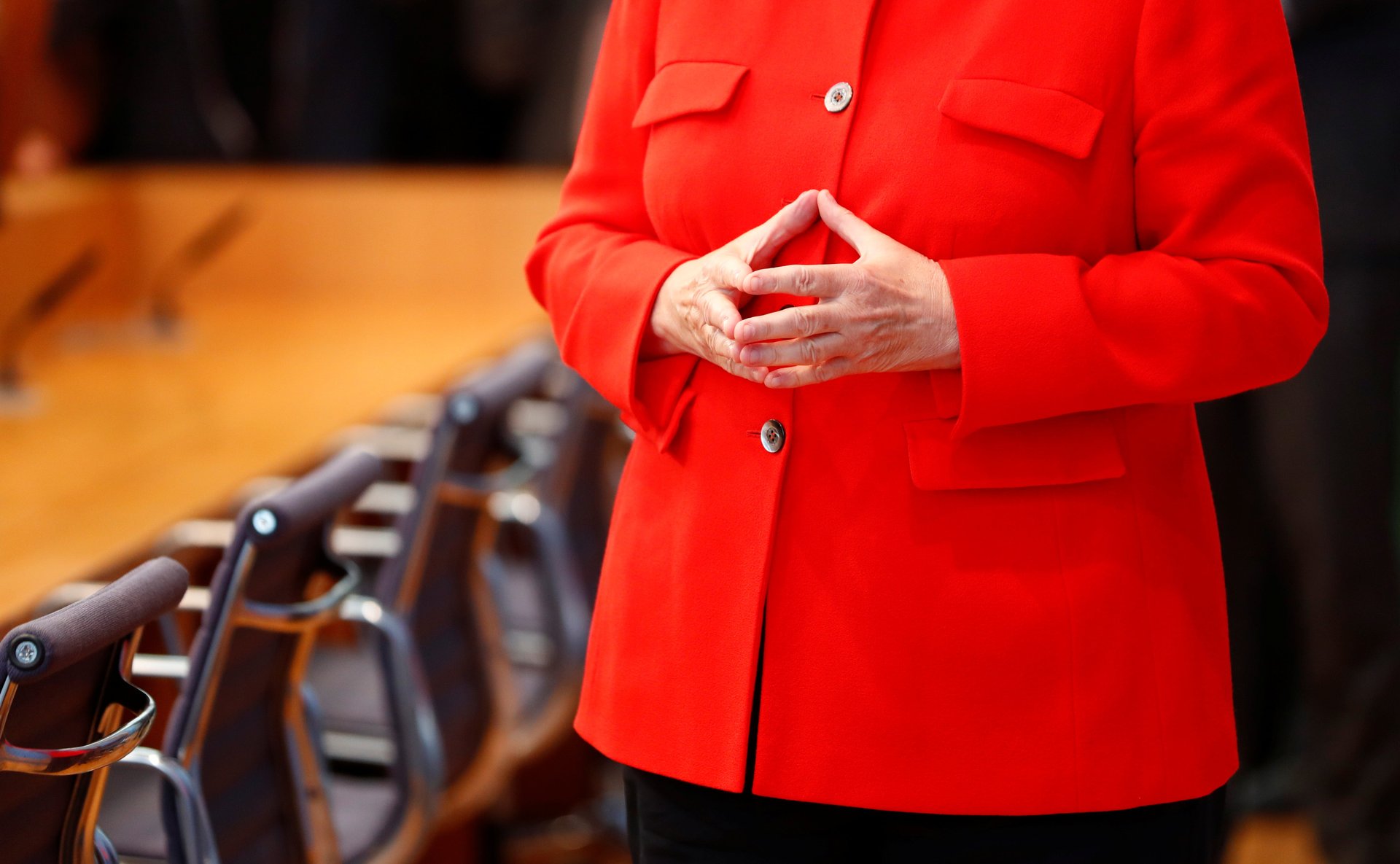A quick guide to understanding the German election
Those outside Germany could be forgiven for barely noticing that the country is going to the polls in less than a week to decide its government for the next four years.


Those outside Germany could be forgiven for barely noticing that the country is going to the polls in less than a week to decide its government for the next four years.
Barring a few boisterous protests, election campaigning has been a civilized, even tedious, affair, with chancellor Angela Merkel neatly neutralizing her opponents on the road to what currently looks like a guaranteed fourth term.
Germans don’t directly vote for their leader like in the US, but they can vote for a party. In Merkel’s case that would be the Christian Democratic Union (CDU), which right now is a beefy 14 percentage points ahead of nearest rival the Social Democrats (SPD), according to the latest Emnid poll (link in German).
Why the German election is a big deal
Germany is Europe’s largest economy and the backbone of the European Union—and Merkel is one of the world’s most powerful leaders. Germany plays a crucial role in shaping the EU’s policies, and standing up to Russia, Turkey, and even Donald Trump. It’s a driving force in holding the EU together, especially now that Britain is leaving the bloc. While we can expect Merkel to stay at the helm, her choice of coalition partner will influence Germany’s domestic and foreign policy over the next four years.
The rest of the race
As well as the CDU and SPD, there are four other political parties who are more or less neck-and-neck at the moment. Each party is represented by colors: The CDU and its sister party the Christian Social Union are black, while the SPD is red. Coalitions are sometimes referred in Germany by colors, eg, a “Jamaica coalition” would be one between the Christian Democrats (black), Greens (green), and Free Democrats (yellow).
The other key parties are:
The liberal Free Democrats (yellow)
The left-leaning Green Party (green)
The Left (dark red or purple)
The right-wing Alternative for Germany (blue)
Why third is the new first
Watch for whichever party comes in third place after the CDU and SPD, because it could mean the Christian Democrats have a chance to team up with a new coalition partner.
The FDP is the one to watch here. It looks set to re-enter parliament this year after failing to clear the 5% hurdle in 2013, and some polls predict it could win enough votes to allow it to form a coalition with the CDU/CSU (they were historically coalition partners).
This could mean some changes, as the pro-business FDP favor slashing government debt and taxes, and taking take a stricter line with other EU countries—it’s dead against any more bailouts for Greece. Its leader Christian Lindner told Bloomberg that other EU countries needed to be responsible for their own fiscal policies, and that he was against a Franco-German alliance that would entail “pots of money” for Emmanuel Macron.
On the other side, if the Greens were to be part of the next coalition, they could pull Merkel more to the left.
Although the Left and the AFD are both polling at around 10%, Merkel’s party has ruled out forming a government with either of them.
Here’s how the voting works
Everyone gets two votes on their ballot paper. The first one is to choose a local representative for their district. The second is to choose a party for parliament.
Germany has 299 districts, and each one has a representative in the Bundestag. The Bundestag actually has a minimum of 598 seats, and the remainder of them are portioned out based on what percentage of the national vote each party wins—and that’s the key result we’ll all be watching for on the night of Sept. 24. The threshold to get into parliament is 5%.
Then there’s the overhang mandate…
Putting it simply, the overhang mandate exists to balance the state and municipal level votes if one party’s share of the local-representative vote (the first vote) is higher than its share of the party vote (the second vote). The extra seats are handed out so as not to distort the party vote, and this can lead to the number of lawmakers mushrooming—the current parliament has 631 members.
What happens once the results are in?
Negotiations then begin on forming a coalition government—a coalition needs at least 45% of the vote to form a government—and the process can take weeks. Only once that’s completed can the chancellor be elected.